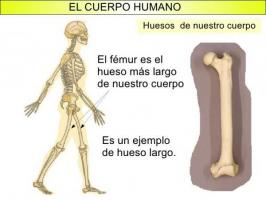Types of most important NEUROTRANSMITTERS

The Central Nervous System It is made up of a large number of cells, very different and with a lot of communication between them. This complex group of cells has been widely studied since ancient times since it hides such human characteristics as memory, feelings, etc.
One of the main characteristics studied for centuries is the communication between neurons. This communication is carried out, on a large number of occasions, by means of neurotransmitters. In this lesson from a TEACHER we will review the major neurotransmitter types that we can find in the human being.
In general, a neurotransmitter is a biomolecule that allows the transport of information from one neuron to another neuron, a muscle cell, or a gland. As a consequence, they will perform an action or simply pass that information to another structure. This communication occurs to save a space that separates these two cells. This space is called synapse.
Sometimes, the physical space that separates a neuron from the next structure is called a synapse while others are named after the set that make up the neuron, the gap and the other cell. In this lesson we will use synapses as the compendium of these three, while the space that separates them will be called
synaptic cleft.Characteristics of a neurotransmitter
More specifically, it is defined that the characteristics of a neurotransmitter have to be the following:
- It has to be synthesized in the neuron.
- It must be present in the neuron prior to synapse and must be released in sufficient quantities to exert a determined effect on the postsynaptic neuron or effector organ.
- When artificially delivered, in reasonable concentrations, it should perform exactly the same effects as the naturally released transmitter.
- There must be a specific mechanism to remove the substance from the synaptic cleft.
Although not all authors fully agree with this, it is accepted that all recognized neurotransmitters have these characteristics. As you can imagine, there are a large number of molecules that can meet these criteria, and to better study them the Researchers have developed two general classifications of neurotransmitter types, according to their size and their chemical nature.

Image: Slideplayer
Some authors describe neurotransmitters by classifying them into two large groups: neurotransmitters of small molecular size and neuroactive peptides or neuropeptides.
Small molecular size neurotransmitters
The group of small molecular size neurotransmitters it is very low, although there are well-known neurotransmitters such as adrenaline, dopamine, acetylcholine, noradrenaline, serotonin, etc. There are few neurotransmitters within this group, and in most cases, these transmitters are synthesized in the cytoplasm of the presynaptic terminal, and are then absorbed by active transport to lodge within the small vesicles.
Neuroactive peptides or neuropeptides
On the other hand, neuroactive peptides or neuropeptides are less known but very important molecules. such as substance P and other tachykinins, opioid peptides, and other highly important polypeptides biological. The action of these neurotransmitters is usually slower since their elaboration is more laborious.
They are synthesized in the ribosomes of the neuronal body and are part of large protein molecules; These large proteins first enter the endoplasmic reticulum of the cell body, to be cut and form the precursor of the neurotransmitter. Later, this precursor enters the Golgi apparatus, where neurotransmitters are covered by a vesicle that transports them to the end of the neuron and just at the end of the neuron, the vesicles rupture to release the neurotransmitter to the cleft synaptic.

Image: Slideshare
By now you will have gotten used to the idea that neurotransmitters are very complex chemical molecules. That is why we can also find numerous types of neurotransmitters if we group them according to the most important chemical groups that we can find in them.
The classification of neurotransmitters according to their chemical nature distinguishes 6 groups:
- Neurotransmitters amines: They are neurotransmitters that are derived from amino acids such as tryptophan. Examples of this type of neurotransmitter are serotonin, epinephrine, norepinephrine or dopamine.
- Amino acids: Unlike the previous ones, which were derived from different amino acids, some neurotransmitters are amino acids themselves. Some examples of amino acids with neurotransmitter function are aspartate, glutamate, GABA or glycine.
- Purines: Purines are molecules like ATP or adenosine, which until relatively recently were not known but also act as chemical messengers in our central nervous system.
- Gaseous neurotransmitters. Although it is not the most normal thing, some neurotransmitters are not liquid substances or in solution, but are gases. The main example of a gaseous neurotransmitter is nitric oxide.
- Peptides. Neurotransmitters of a peptide nature are widely distributed in the brain. For example: endorphins and takinins.
- Sterearic neurotransmitters. The most representative neurotransmitter of a stearic chemical nature is acetylcholine.




